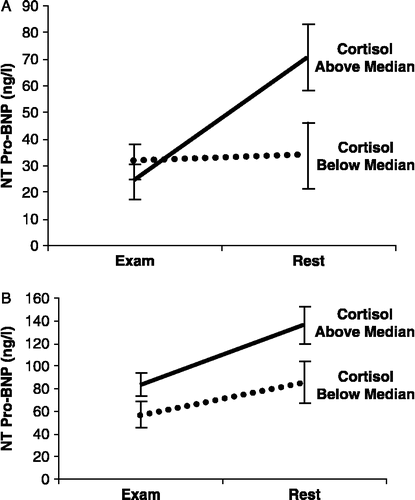Figures & data
Table I. Subjects' physical characteristics.
Table II. Subjects' hormonal and hemodynamic variables at rest and in response to stress.
Figure 1 The change in circulating concentrations of NT-proBNP from rest to stress in relation to the change in circulating cortisol concentrations. The change in circulating concentrations of NT-proBNP from rest to stress in relation to the change in circulating cortisol concentrations. Male (n = 70 (A)) and female (n = 95 (B)) students were divided into two groups according to their absolute change in circulating levels of cortisol (below median and above median). Multivariate analysis using ANOVA for repeated measures revealed in males a significant interaction (p = 0.02): male students with the above median difference in cortisol between stress and rest have lower stress-day level and higher rest-day concentrations of NT-proBNP than students with below median differences. In females (B), no interaction was found: female students with the above median difference in cortisol between stress and rest have higher stress-day and higher rest-day concentrations of NT-proBNP than students with below median differences. The error bars indicate s.e.m.
